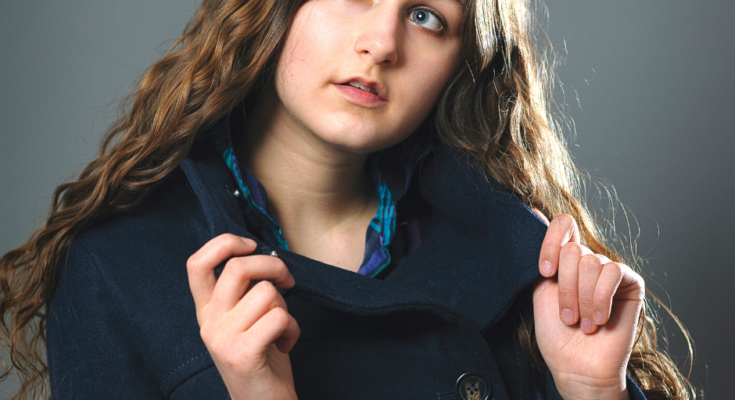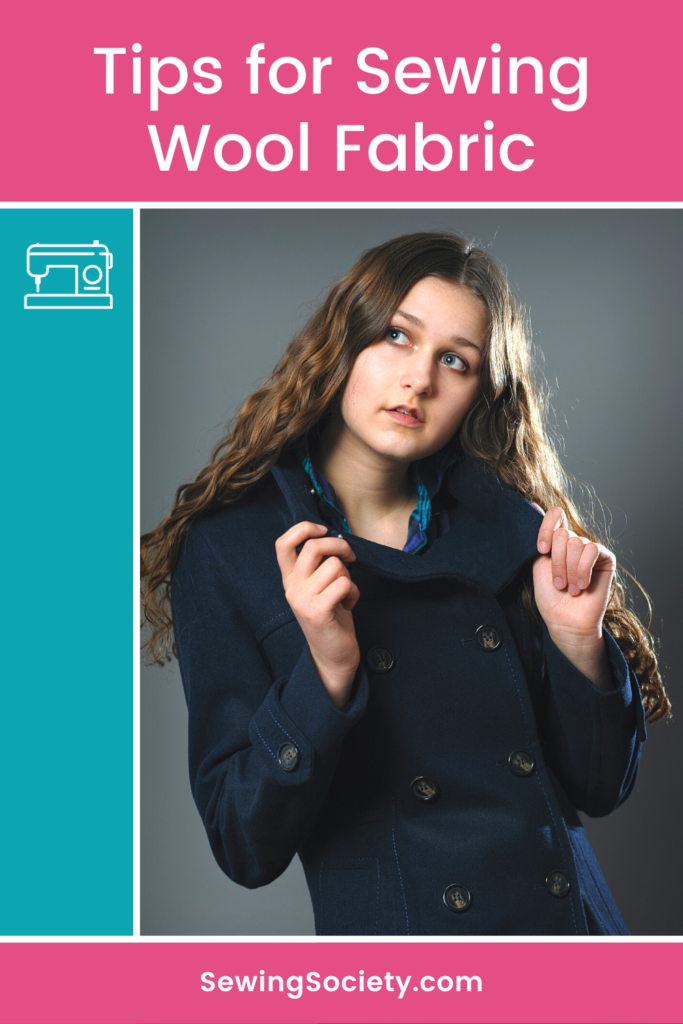Disclosure: This post may contain affiliate links. I earn a small commission when you click a link and make a purchase. Thanks for supporting SewingSociety.com!
I’m getting ready to sew myself a nice wool coat for church. I want a peacoat style with a belt. (If you know of a good pattern, let me know in the comments…) I just got some super nice, wool coating fabric from Amazon for the project. I’m so excited!
Wool is a super absorbent, breathable fabric that retains heat and has insulating properties when wet. It is made from the hair of sheep (or other animals, such as alpacas.) It’s a common choice for winter coats. It also makes fine-tailored suits, knitwear, and much more.
Preparation and Care of Wool Fabric
Before you start a sewing project with wool, check the care instructions on the fabric bolt. Most wool fabric is dry-clean only. You can still preshrink the fabric by steaming it and allowing it to dry naturally. When pressing is needed, use steam and a damp press cloth. Do not press too hard; let the steam penetrate and do the work for you.
Layout, Marking, and Cutting Tips for Wool
Wool often has a nap, so use the ‘with nap’ layout in your pattern and buy extra fabric for matching wool plaids. Before laying out your pattern pieces, fold your fabric with right sides together and straighten the ends. Pin your pattern to your fabric using long, sharp pins such as quilter’s pins.
Transfer any pattern markings to the wrong side of your fabric using tailor’s chalk or tailor’s tacks and test any marking tools on scraps of fabric to be sure the marks can be removed from your finished garment.
Sewing Machine Setup for Wool
You don’t need a special sewing machine to sew wool, even if you’re using a heavy-weight coating fabric. However, there are some things you should keep in mind when adjusting the settings on your sewing machine.
- Needle: Use a universal needle in size 90/14 or 80/12 for most woven, wool fabrics. A sharp/jeans needle in size 100/16 may be needed for layers of coating fabric. Wool knits will require a stretch/jersey needle if a universal needle does not give good stitch quality.
- Presser Foot: A straight stitch foot or zigzag foot may be used, depending on the stitches you plan to use.
- Stitch Length/Width: Set your stitch length between 3.0mm and 4.0mm. Adjust up or down if needed after you sew a sample seam on some scraps of the fabric. For wool knits, be sure to use a stretch stitch or a narrow zigzag stitch so your seams will stretch with your fabric.
More Sewing Tips for Wool
Wool is a common choice for high-end garments because of the beautiful results it can achieve. Finish all raw edges with a serger or use a seam binding on unlined wool garments.
If buttonholes are part of your project, make sample buttonholes on scraps of fabric first. Bound buttonholes add a couture touch to tailored, wool jackets — just be sure the buttons have a shank as thick as the fabric layers at the buttonhole.
When pressing seams open, use a seam roll to avoid leaving marks on the right side of your fabric. A tailor’s ham is helpful for steaming jacket lapels and curved seams into shape.
Have you sewn anything with wool fabric? I’d love to see pics in the comments!
Share this post on Pinterest!





